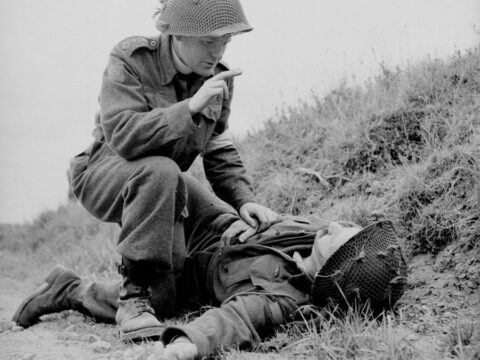For decades, the only times I saw my father cry were when my two grandfathers died, and his tears ended almost as quickly as they had started. He viewed crying as a sign of weakness.
Then, at age 80, he had a small stroke and began a slow descent into dementia. In those years, his tears came more often: when he was touched by something someone said, when he sang familiar hymns or recited Psalms, and when he felt he was becoming a burden.
You may unsubscribe from any of our newsletters at any time.
One of the most touching moments happened over lunch. My mother mentioned that my father had sometimes been hard on us kids. Through tears, he said, “I wish I had shown more of the love I felt for you back then.” My eyes filled at the recognition that not only did he love me, but he was also following some perceived code of childrearing that had not served either him or us. This was a grief that he carried, and until then, without realizing it, so did I.
Years ago, I read that we need to cry at least once every two weeks to stay healthy. When I share this wisdom in my workshops or classes about grief, people laugh — they think it is a joke. When I was a hospital chaplain, I spent many hours with people who had good reason to cry: either they or someone they loved was seriously ill. I noticed that everybody who did cry in my presence apologized. Sadly, patients and their families often feel they can’t even cry in front of each other, preventing them from being more real and honest together when this connection is most needed.
Have you ever met an infant or a young child who does not cry? It is a normal, natural, pre-verbal response to discomfort, pain, sadness and anger. As we get older, we’re taught to mask our true feelings. This conditioning starts very early. A five-year-old recently said to me, “I’m a tough girl, and tough girls never cry!”
I began to change my mind about tears in 1978. I had an ectopic pregnancy that resulted in emergency surgery. I wrote to my spiritual mentor that I was crying a lot, as if this were a problem. “Don’t be embarrassed,” he responded. “Comfort is experienced where we stay on in utter helplessness, in pain and tears. In the midst of them, we begin to experience how closely related suffering and joy are.”
We need to relearn how to grieve. Giving ourselves permission to feel our feelings is a spiritual practice that has the potential to sustain us through difficult times. When we stay long enough with pain, we allow for what author Jan Hatanaka calls an “epiphany of despair.” We emerge in a different, sometimes even better, place. The spiritual term is “resurrection” or more simply “new life” — new energy, new resolve and new purpose can surface.
On the day of my father’s funeral, I promised myself that I was going to be fully present and not hold back my tears. My father loved church hymns, and we sang five that morning. I blubbered through them all. Following the service, I felt a euphoric, deep joy, as if I had been through a dark tunnel and come out the other side.















